Jun 06, 2025
Author:Amanda Lyu

That crunch you heard? Probably a fly, a spider, or worse. Cats love to hunt. But their prey isn’t always safe. Bugs are everywhere, and your cat’s instincts aren’t filtering out the dangerous ones. Some insects are harmless. Others bring parasites, poison, or allergic reactions that can land your cat at the vet.
Here’s the deal: You can’t stop bugs from getting in. You can learn which ones matter—and how to handle the rest. This guide breaks down the facts about what you need to know to keep your cat safe (and your peace of mind intact).
● Which bugs are generally safe for cats to eat
● Which ones are toxic, venomous, or parasite carriers
● How bug-eating can affect your cat’s digestion and health
You’re not overreacting. You’re asking the right question. Keep going—we’ve got answers.
Let's face it - cats are nosy little creatures. That curiosity often leads them straight to those creepy crawlies wandering around your home. Spotted your furry friend munching on a bug? Don't panic. Many common insects are totally fine for them to eat. Some might even add a tiny protein boost to their day.
Here's the scoop on bugs that are generally safe for your cat to snack on (assuming they're not coated in pesticides or other nasties):
● Houseflies: Those pesky flies that buzz around your kitchen? They're usually just moving cat toys with bonus snack potential. Your cat can chase, swat, and gobble one up without issues. Indoor flies rarely carry anything harmful, so no need to wrestle it from their paws.
● Crickets: Funny enough, crickets are so safe for cats that some pet food companies are adding cricket protein to commercial cat treats. Wild crickets might carry the occasional parasite, but a healthy cat can typically handle the random cricket snack without trouble.
● Moths: Soft-bodied and gentle, moths won't hurt your kitty if they become an impromptu midnight snack. They don't bite, they don't sting, and most varieties are harmless when consumed. Think of them as flying cotton balls with wings.
● Ants (Black or Red, Non-Fire): Regular ants – especially the common black ones or smaller red varieties – are harmless. They don’t carry toxic chemicals, and their tiny size means they’re easy for cats to digest. Just avoid those fire ants, they’re a different story altogether.
● Spiders (Non-Venomous Only): Most spiders lurking in your home corners are non-venomous, making them relatively safe cat snacks. Your average cellar spider or jumping spider poses minimal risk. The key thing is knowing what's what – if you live somewhere with brown recluse or black widow spiders, eating one could be dangerous for your kitty.
When your cat's inner hunter takes over and ends with an insect appetizer, knowing which bugs are harmless can save you from unnecessary worry. Sometimes a bug snack is just part of being a cat.
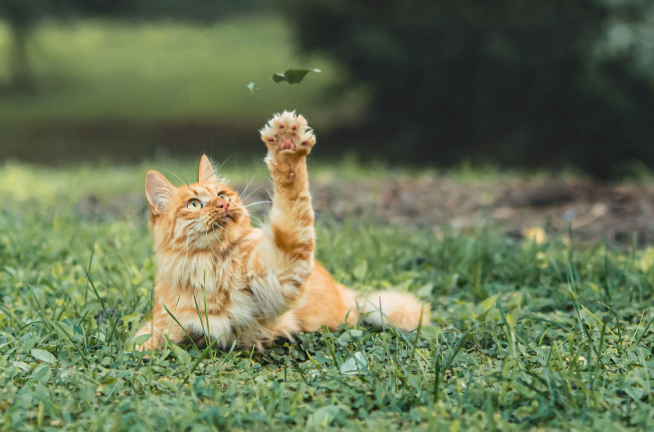
So let’s talk about keeping your little hunter safe. While some bugs are just crunchy snacks for your cat, others can be trouble. Knowing which creepy crawlies pack toxins, venom, or nasty parasites matters – whether they bite, sting, or become an impromptu cat snack. Keeping these unwanted visitors out of your home and yard can save you both a stressful trip to the vet.
Here’s a list of bugs that should definitely stay off your cat’s menu:
This one’s serious. Black widows, brown recluses, and other venomous spiders, plus their distant cousins, scorpions, can be big trouble. If your curious cat gets bitten or decides to munch on one, they’re facing some nasty neurotoxins that can cause drooling, shaking, unusual tiredness, or even organ damage. A scorpion sting means an emergency vet visit – not how anyone wants to spend their evening.
When a bee or wasp stings inside your cat’s mouth or throat, the swelling can make breathing tough. Think about how your lips puff up from a sting, then imagine that happening inside your throat. Not good. Plus, the venom can trigger allergic reactions that turn a simple sting into a medical crisis.
These little troublemakers pack a punch with both bites and stings. If your cat swats at a mound or samples a few, they’ll likely end up with painful welts or swelling. Some cats may have an allergic reaction, and eating multiple fire ants can lead to an upset stomach – as if cats needed another reason to throw up on your favorite rug.
The little house centipedes are usually no big deal, but their bigger relatives, especially in tropical or desert areas, carry venom that means business. A bite from one of these centipedes can cause pain, swelling, or worse, depending on which multi-legged menace your cat encountered.
Most caterpillars are just fuzzy little plant eaters, but some, like the saddleback or puss caterpillar, have venomous spines under all that fluff. Contact with these caterpillars can cause burns, vomiting, or irritation in your cat’s mouth and digestive system. Best to be wary of any caterpillar with bright colors or unusual hair – they’re basically advertising “don’t eat me” for a reason.
These tiny vampires aren’t just itchy nuisances. If your cat swallows fleas while grooming (and they definitely do), they can end up with tapeworms as an unwanted bonus.
Ticks
Ticks attach to the skin more commonly and deliver serious diseases like Lyme disease through their bites. They’re basically little disease delivery packages that no cat needs.
These aren’t highly toxic, but stink bugs release a chemical that’s seriously irritating – it’s their whole defense strategy after all. If your cat chomps or swallows one, you’ll likely see vomiting or foaming at the mouth. The reaction looks scary and feels miserable for your ca,t but typically doesn’t cause lasting harm. Consider it nature’s way of teaching your cat that not everything needs to be tasted.
Most cats don’t exactly savor bugs like fine cuisine—they just chomp and gulp them down. What happens after that depends on the bug’s size, shape, and what it’s made of. Some bugs pass through your cat’s system without a hitch. Others cause stomach irritation or worse.
Let’s take a look at how your cat’s body handles these crunchy little snacks.
When your cat swallows an insect with a hard outer shell, like a cricket, beetle, or cockroach, their digestive system has to deal with something that doesn’t break down easily. That tough, chitinous shell resists stomach acids, especially in the upper part of the stomach where food first lands.
These undigested bug bits might:
● Scratch up the stomach lining, causing small areas of inflammation or tiny ulcers
● Trigger mild inflammation as your cat’s body works to move those sharp fragments through the digestive pathway
● Slow down the emptying of the stomach, especially if your cat already has sensitive digestion or other tummy troubles
Here’s what happens:
● Vomiting kicks in when your cat’s gut nervous system detects toxic compounds or bacterial badness, basically hitting the “reverse” button on digestion
● Diarrhea happens when the intestines become more permeable and secrete extra fluid—it’s your cat’s body trying to flush out whatever’s causing trouble
Your cat might also develop a temporary inflammation of the intestines. You might notice mucus in their poop, mild dehydration or even streaks of blood from irritated blood vessels in the colon.
How bad these symptoms get depends on:
● What kind of bugs and how many did your cat eat
● If those bugs had been exposed to pesticides or city pollutants
● Your cat’s age, immune strength and hydration levelIf your cat is vomiting or has diarrhea and seems lethargic or won’t eat—it’s time for some diagnostic imaging and testing for pathogens in their poop.
Your cat doesn’t need to get stung to have an allergic reaction. Often, it’s just proteins in the bug’s body or enzymes they secrete that trigger the immune system to freak out.
Here’s how that hypersensitivity might show up:
● Your cat’s immune system misidentifies bug proteins as bad guys and releases histamine and other inflammatory chemicals
● In cats with sensitive immune systems, this can escalate to hives, swelling of soft tissues, or even breathing difficulties
● You might notice local reactions like puffy lips, excessive grooming around the mouth, or sudden scratching at the face and ears
In rare cases eating bugs can cause anaphylaxis, especially after multiple bee stings or bites from venomous spiders. This is a medical emergency that comes with vomiting, collapse, labored breathing and racing heartbeat.
Some insects are basically Uber drivers for parasites. When your cat eats one of these carriers, the parasite larvae hitch a ride through the digestive tract and set up camp.
Common ways this happens:
● Fleas → Dipylidium caninum (tapeworms). The larvae activate in the small intestine and grow for over 2–3 weeks
● Cockroaches and beetles → Physaloptera (stomach worms), which grab onto the stomach lining and cause chronic vomiting
● Crickets or wood roaches → Potential carriers of Toxocara cati eggs if they've been crawling through contaminated cat poop
You might not see symptoms right away. Long-term issues can include:
● Poor nutrient absorption
● Chronic gut inflammation
● Dull, unhealthy coat due to nutritional deficiencies
Regular poop checks and appropriate deworming help reduce the risk, especially for outdoor cats or those with a hunting habit.
Toxic reactions aren't just from obvious threats like wasps or scorpions. Many bugs defend themselves with chemicals that can mess with your cat's system.
Some examples of bug toxins and their effects:
● Stink bugs: Release chemicals that irritate the mouth and digestive tract, causing drooling and repeated vomiting
● Certain caterpillars: Have tiny venomous hairs that, when chewed, can cause nasty ulcers on your cat's tongue or in their throat
● Fireflies: Contain compounds called lucibufagins that can harm the heart, even in small amounts
● Boxelder bugs: Secrete chemicals that can inflame the digestive tract
You might notice your cat:
● Drooling excessively
● Licking their lips and making uncomfortable noises
● Gagging, heaving, or pawing at their face
● In serious cases, trembling, slow heartbeat, or neurological symptoms
Don't wait around if you see these signs, especially if they show up within 30–60 minutes after your cat's bug snack.
Bug-Snacking Questions Solved with Smarter Cat Care
Look at you, no longer playing the "is this bug deadly?" guessing game with your curious cat. You've got the scoop now on which creepy crawlies your kitty can munch without drama and which ones might land you both at the vet's office. You can spot those digestive red flags when something's off, you know how sneaky parasites work their way in, and you've learned that even the tiniest bugs can pack a surprising punch for your furry friend.
You've also become the boss of your living space. By plugging those wall gaps, cutting off the all-you-can-eat buffet for pests, and using deterrents that won't harm your cat, you're winning the indoor bug battle. But here's the thing—keeping bugs away is only half the story. The other half? Giving your cat better stuff to do with their time.
This is where smart feeding routines come into play. When your cat gets regular, engaging mealtimes that satisfy their hunter instincts, suddenly that housefly buzzing around becomes way less interesting. Your cat has better things to do than chase random bugs—like waiting for you to break out the good food.
Label:
Popular Post

What to Feed a Sick Dog With No Appetite? [2025 Guide]
May 16, 2023
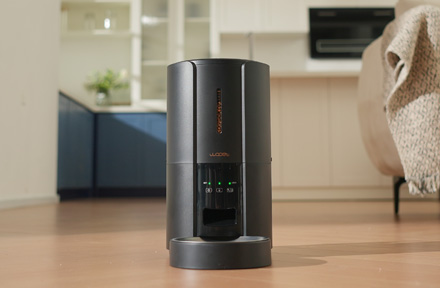
Troubleshooting Common Issues with Automatic Pet Feeders: Tips & Tricks for Pet Owners
Oct 26, 2023
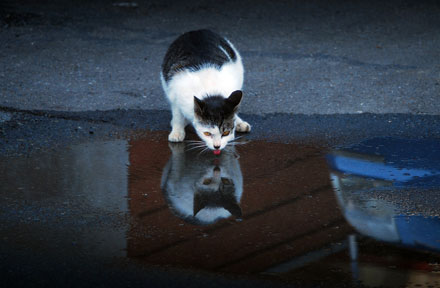
Why Does My Cat Cough After Drinking Water? 8 Potential Reasons
Mar 13, 2023
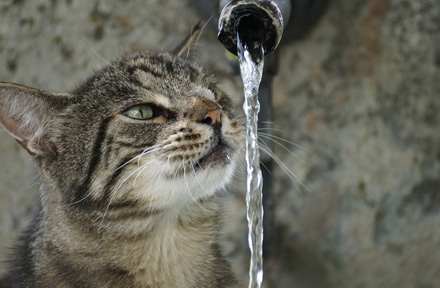
Why is My Cat Throwing up Water? Top 5 Causes Here
Feb 08, 2023
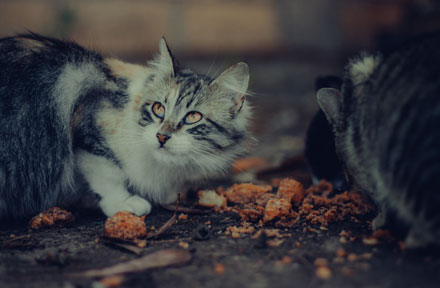
My Cat Only Eats A Little at A Time - What to Do?
Feb 27, 2023
$99.99
$129.99
Copyright © 2025 WOPET. All Rights Reserved.